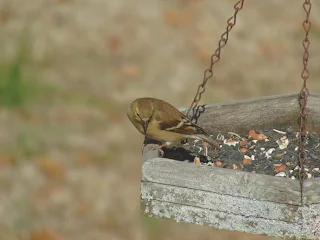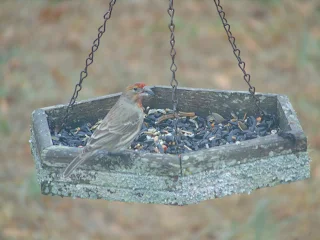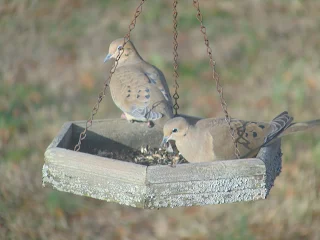Greetings & Salutations, Y'all!
Today, Wednesday, March 27, 2024, Southern Fried Common Sense & Stuff has achieved the milestone of over 500,000 Worldwide Views online!
Nearly ten years ago -- in December of 2014 to be exact -- when I started this non-profit personal blog site (then originally named just Southern Fried Common Sense)
I honestly didn't know what to expect.
It began partly as a means to have my voice heard on matters related to
Southern-Confederate historical heritage and other topics related to the
history of my own little corner of Dixie
(the American Southland to all y'all outside of the USA), as well as
indulge in and sharing my favorite personal hobby of amateur astronomy
and night sky photography, as well as travel blogging and
photojournalism.
Although many people here in my country just see my home state
of South Carolina as largely a vacation site (and yes we did have some
excellent beaches here) and certainly Charleston -- one of the oldest
cities in America built by European settlers -- has more than its fair
share of history.
The upstate Piedmont region of South Carolina where I grew up as a Southern boy born on the bicentennial of America's independence and raised in the 1980s and 1990s also has
important history that has helped shaped both Southern and American identity as
a whole in many ways. History that is both good and bad, but certainly worth sharing. I'm proud to call myself Southern and very proud have been born in this part of America.
One of the major goals of Southern Fried Common Sense & Stuff has always been to share that history and its importance in as accurate
and as fairly balanced an properly researched manner as my own humble
skills as a simple, small-town country writer can provide. Judging by some
of the comments I've received over these last nine years, I've done a
pretty good job and I stand by my work.
Since starting this
blog I've also expanded the scope of this blog's content to include
other topics of nostalgic nature and personal stories of my life -- some
of them deeply personal in nature. Some for educational purposes, and
others to share further hobbies of mine, but overall as a means for you,
the reader, to better understand who I am and the personal values that
shape the person writing on this site.
My goal was simply to share my personal love for the small corner of Dixie I was born in, share my sky watching hobbies, talk about the interesting and important local history of my humble little corner of South Carolina and its importance to the American experience, travel and nature photojournalism, and tell some entertaining personal stories -- as well as a few serious topics -- about my youth and current life.
In nearly 10 years and over 700 posts later, I've been amazed by the outpouring of support that I've received from people, not just in my native South Carolina and United States, but from all across this wonderful world we share.
Though the majority of my views come from my fellow Americans (U.S., Canada, Mexico, and other points south) I'm pleased to say that Southern Fried Common Sense has been viewed by people across the oceans from Europe and Asia, to Africa and Australia. From every corner of this planet, on every continent, including someone from the South
Pole at the Amundsen-Scott Antarctic Station
-- literally as far south as it gets! That's pretty outstanding folks!
Not too bad for a currently 47 year-old American-Southern born Gen-Xer who lives along with a cat and spends hours at his computer in his home office in his PJ pants and old rock band t-shirt. Just goes to show that even a humble
writer from a small town in rural South Carolina can provide something
of interest. Y'all have my personal thanks for
taking the time to read and review my work over these last nine years.
Now that we've crossed this outstanding milestone together, the only place to go now is forward. This Southern boy will continue to bring y'all more good content for as long as the Good Lord allows me to and I have the ability to do so.
Once again, I thank each and every one of y'all for making this blog the underground success that it is, and please continue to offer your support and become an official follower of Southern Fried Common Sense & Stuff to receive up-to-date content.
Also comment below to tell me what sort of content you'd love to see more off from this site: history, photojournalism, travel, night sky photography, personal stories, nostalgic movie and television reviews, ect.
God bless y'all and have a wonderful Dixie Day, y'all hear!
Wednesday, March 27, 2024
THANK Y'ALL FOR 500,000 WORLDWIDE VIEWS!!!
Monday, March 25, 2024
Night Sky Photography -- 03-24/25-2024 -- Full Worm Moon & Penumbral Lunar Eclipse
Good evening, fellow stargazers!
The first full moon of spring 2024 her in the Northern Hemisphere rose this evening into a somewhat clear night sky with only a few small clouds.
The March full moon -- also known as the Full Worm Moon in North America -- is the second smallest (most distant) full moon from the Earth in 2024 at around 251,900 miles (or 405,394 kilometers) away.
The Full Worm Moon of 2024 also takes place during a Penumbral Lunar Eclipse -- when the outer part of Earth's shadow covers the full moon when Luna is on the opposite side of the Earth from the Sun. The Penumbra is the outer lighter part of the Earth's shadow as opposed to the darker inner part of the Earth's shadow, the Umbra.
Luna began to cross the Earth's penumbra shadow as viewed here in South Carolina at about 12:54 a.m. Eastern Standard Time and would reach peak eclipse at around 3:12 a.m. EST when the Full Worm Moon would cover roughly 90% of the lunar surface.
Since the Moon would only travel inside the lighter part of the Earth's shadow, Luna won't appear to have a dark bite taken out of her, but rather appear slightly darker to the naked eye.
The Penumbral Lunar Eclipse ended at 5:35 a.m. EST, but by then your favorite blogger had long since returned to bed.
The following are the photos I took of this late evening night sky event. One shows the Full Worm Moon in the eastern sky with the bright star Spica lower towards the horizon. Spica and Luna will appear next to each other over the next couple nights as the Moon moves past it towards the east. The second is a clearer shot of the surface of the Full Worm Moon prior to the lunar eclipse and the third and final photo shows the slightly darker moon now fully in the Earth's penumbra shadow.
I hope y'all enjoyed my photos for the evening and, until next time -- be sure to keep your eyes to the night skies, y'all hear!
Tuesday, March 19, 2024
Night Sky Photography -- 03-18-2024 -- The Winter Triangle Constellations & Major Stars Before Spring
Last night about 50 minutes after sunset the sky was really clear and so I was able to take this really beautifully clear photo of every major star of the Constellations Orion, Canis Major (The Greater Dog), and Canis Minor (The Lesser Dog) as well as the nearby Constellation Taurus The Bull and its two largest stars: Aldebaran and Elnath.
Very soon we'll be saying goodbye to these constellations -- at least for a few months -- as they will begin to move lower towards the setting sun during the coming spring months here in the Northern Hemisphere. Spring here officially begins on Tuesday, March 19th.
Monday, March 18, 2024
Saturday, March 16, 2024
Night Sky Photography -- 03-11/13/14-2024 -- The Moon & Jupiter Over Three Nights
Greetings & Salutations fellow stargazers!
Last week over the course of several evenings, I was able to photograph the progression of the Moon rising in the western sky to meet with, and pass by, the planet Jupiter an hour after sunset. These photos were taken over the course of the evenings of March 11th, 13th, and the 14th -- cloud cover prevented me from capturing any photos on the evening of the 12th.
The first photos taken on the evening of Monday, March 11th show a very young crescent moon just above the treetops with Jupiter high overhead, as well as a close-up shot of the beautiful crescent moon.
A close up shows the line of Jupiter's own largest moons: Io, Callisto, Ganymede, and Europa as faint but still visible dots.
Earlier the same evening before the sunset I was able to capture these outstanding photos of a pair of passenger jets flying past the crescent moon in the clear evening sky with the sunset reflecting off them.
The last photos were taken on the evening of Thursday, March 14th showing Luna passed Jupiter and meeting the Pleiades Star Cluster in the evening sky. The wide shot shows the distance the Moon has traveled from just the evening before from Jupiter and its position just below the Seven Sisters and the nearby Hyades Star Cluster. The close-up of the Moon and the Pleiades shows all the major stars of the cluster beautifully.
I hope y'all enjoyed my photos as I enjoy presenting them to y'all. Have a wonderful day and be sure to keep your eyes to the night skies, ya hear!
Sunday, March 10, 2024
A Final Act Of Retaliation -- The Execution of Private James M. Miller C.S.A.
 |
| The grave of Private James Madison Miller C.S.A. (1816-1865). |
By the time the winter of 1864-1865 was turning over to spring, the War Between the States was only a couple of months away from formally ending. However, the war was still very much a serious concern for the people of South Carolina.
One month
before, on Wednesday, February 1, 1865, Major General William T.
Sherman's invading Union army entered the Palmetto State, beginning the Carolinas Campaign, the final major campaign of the American Civil War.
Despite
delaying the Union forces in several small battles, and winning one victory at Aiken, South Carolina, the Confederate defenders could only
conduct a fighting withdraw in the wake of Sherman's nearly 60,000 man
blue-clad horde -- which conducted itself harshly on the first Southern
State that first dared to declare its independence from the Federal
Union. Many cities, including the State capitol of Columbia, South Carolina, were burned almost to the ground.
During Sherman's Carolinas Campaign the Official Records
report that about 46 Union soldiers were executed by Confederate
troops, or civilians. These were Yankee foragers -- better know as
bummers -- many of whom were caught in the act of robbing Southern
civilians, or committing other personal crimes.
In addition to the
destruction of military targets, many of Sherman's forage took it upon themselves to enact personal
retribution upon the civilian population of the Carolinas, burning down
houses, robbing and destroying valuables, and even committing acts of
rape and murder. The worst of the latter were against the African-American slave
population that they were alleged to be liberating from bondage.
These
acts became so heinous that many of these bummers, when they were
caught by the Confederate army, were shot or hanged without trial on the
spot.
The majority of
these incidents occurred once Sherman's forces advanced past Columbia,
South Carolina into upper South Carolina and many of these acts were
blamed on Confederate cavalry under the command of Lieutenant General
Wade Hampton III, himself a native of South Carolina.
The
following correspondence regarding these incidents was exchanged between
Generals Sherman and Hampton gives great insight into just how ugly the war
became in its final year.
On Friday, February 24th, General Sherman wrote the following to Hampton directly:
HDQRS. MILITARY DIVISION OF THE MISSISSIPPI,
In the Field, February 24, 1865.
Lieut. Gen. WADE HAMPTON,
Commanding Cavalry Forces, C.S. Army:
GENERAL: It
is officially reported to me that our foraging parties are murdered
after capture and labeled "Death to all foragers." One instance of a
lieutenant and seven men near Chesterville, and another of twenty "near a ravine eighty rods from the main road" about three miles from Feasterville.
I have ordered a similar number of prisoners in our hands to be
dispensed of in like manner. I hold about 1,000 prisoners captured in
various ways, and can stand it as long as you; but I hardly think these
murders are committed with your knowledge, and would suggest that you
give notice to the people at large that every life taken by them simply
results in the death of one of your Confederates. Of course you cannon
question my right to "forage on the country." It is a war right as old
as history. The manner of exercising it varies with circumstances, and
if the civil authorities will supply my requisitions I will forbid all
foraging. But I find no civil authorities who can respond to calls for
forage or provisions, therefore must collect directly of the people. I
have no doubt this is the occasion of much misbehavior on the part of
our men, but I cannot permit an enemy to judge or punish with wholesale
murder. Personally I regret the better feelings engendered by this war,
but they were to be expected, and I simply allege that those who struck
the first blow and made war inevitable ought not, in fairness, to
reproach us for the natural consequences. I merely assert our war right
to forage and my resolve to protect my foragers to the extent of life
for life.
I am, with respect, your obedient servant,
W.T. SHERMAN,
Major-General, U.S. Army.
Three days later on Monday, February 27th, General Hampton responded, not mincing words:
HEADQUARTERS,
In the Field, Feb. 27, 1865.
Maj. Gen. W.T. Sherman, U.S. Army:
GENERAL: Your communication of the 24th inst. reached me
today. In it you state that it has been officially reported that your
foraging parties are "murdered" after capture. You go on to say that you
have "ordered a similar number of prisoners in our hands to be disposed
of in like manner". That is to say, you have ordered a number of
Confederate soldiers to be "murdered."
You characterize your order in
proper terms, for the public voice, even in your own country, where it
seldom dares to express itself in vindication of truth, honor, or
justice, will surely agree with you in pronouncing you guilty of murder
if you order it carried out. Before dismissing this portion of your
letter, I beg to assure you that for every soldier of mine "murdered" by
you, I shall have executed at once two of yours, giving in all cases
preference to any officers who may be in your hands.
In reference to the statement you make regarding the death of your
foragers, I have only to say that I know nothing of it; that no orders
given by me authorize the killing of prisoners after capture, and that I
do not believe my men killed any of yours, except under circumstances
in which it was perfectly legitimate and proper that they should kill
them. It is a part of the system of the thieves of whom you designate as
your foragers to fire the dwellings of those citizens whom they have
robbed. To check this inhuman system, which is justly execrated by every
civilized nation, I have directed my men to shoot down all of your men
who are caught burning houses. This order shall remain in force so long
as you disgrace the profession of arms by allowing your men to destroy
private dwellings.
You say that I cannot, of course, question your right to forage on the
country - "It is a right as old as history." I do not sir, question this
right. But there is a right older, even, than this, and one more
inalienable - the right that every man has to defend his home and to
protect those who are dependent on him; and from my heart I wish that
every old man and boy in my country who can fire a gun would shoot down,
as he would a wild beast, the men who are desolating their land,
burning their homes, and insulting their women.
You are particular in defining and claiming "war rights." May I ask if
you enumerate among these the rights to fire upon a defenseless city
without notice; to burn that city to the ground after it had been
surrendered by the inhabitants who claimed, thou in vain, that
protection which is always accorded in civilized warfare to
non-combatants; to fire the dwelling houses of citizens about robbing
them; and to perpetrate even darker crimes than these - crimes too black
to be mentioned?
You have permitted, if you have not ordered, the commission of those
offenses against humanity and the rules of war; you fired into the city
of Columbia without a word of warning; after its surrender by the mayor,
who demanded protection to private property, you laid the whole city in
ashes, leaving amidst its ruins thousands of old men and helpless women
and children, who are likely to perish of starvation and exposure. Your
line of march can be traced to the lurid light of burning houses, and
in more than one household there is now an agony far more bitter than
that of death. The Indian scalped his victim regardless of age or sex,
but with all his barbarity he always respected the persons of his female
captives. Your soldiers, more savage than Indian, insult those whose
natural protectors are absent.
In conclusion, I have only to request that whenever you have any of my
men "murdered" or "disposed of," for the terms appear to be synonymous
with you, you will let me hear of it, that I may know what action to
take in the matter. In the meantime, I shall hold fifty-six of your men
as hostages for those whom you have ordered to be executed.
I am, yours, &c.,
WADE HAMPTON
Lieutenant-General.
 |
| Major General William T. Sherman, U.S.A. and Lieutenant General Wade Hampton III, C.S.A. Photos courtesy of the U.S. Library of Congress. |
Hampton more than got his point across as no mass executions of Confederate prisoners took place after this exchange.
However,
this isn't to say that there were no further individual
"eye-for-an-eye" acts of retaliation between the two armies, the last of
which occurred at the beginning of March, 1865.
On
Wednesday, March 1st, one of Sherman's bummers, Private Robert M. Woodruff
of Company H, 30th Illinois Volunteer Infantry, was found dead near Big Lynch
Creek in Chesterfield County allegedly beaten to death by the enemy.
The next day, on Thursday, March 2nd, the Headquarters, 17th Army Corps issued the following order:
HDQRS. SEVENTEENTH ARMY CORPS,
Thirteen Miles from Cheraw, S.C., March 2, 1865.
SPECIAL ORDERS, No. 56.
I:
In accordance with instructions from the major-general commanding the
army, directing that for each of our men murdered by the enemy a life of
one of the prisoners in our hands should be taken, Maj. J.C. Marven,
provost-martial, Seventeenth Army Corps, will select from the prisoners
in his charge one man and deliver him to Brig. Gen. M.F. Force,
commanding Third Division, to be shot to death in retaliation for the
murder of Private R.M. Woodruff, Company H, Thirtienth Illinois
Volunteers, a regularly detailed forager, who was beaten to death by the
enemy near Blakney's Bridge on or about the 1st day of March, 1865.
The Union major initially
refused to pick a prisoner for execution, believing that Private
Woodruff -- who'd apparently been unpopular among his own peers -- might
have been murdered by one of his own comrades.
It
would actually be learned several years later that the Yankee had
actually been killed by a slave who had been taken by this soldier. When
the opportunity arose, the slave killed Private Woodruff and returned
to his master's farm.
Regardless, the major was threatened with court-martial if the order was not carried out.
At
about noon that day, lots were then drawn among the Confederate
prisoners. One young prisoner was the unfortunate winner, but another
prisoner stepped forward volunteering to take the young man's place, an
older man named James Miller.
James Madison Miller was a native
of Chesterfield County, born in Jefferson, South Carolina on Sunday,
April 7, 1816 and was a Methodist minister and father of six when the
war broke out in 1861. Private Miller served in Company C, 5th
Battalion, South Carolina Reserves (also known as Brown's Battalion), and later as a guard and minister for prisoners at the Florence POW Stockade between September of 1864 till February of 1865. The 48 year old Miller was at home on leave when he was captured by Union troops in late February, 1865.
Private Miller was taken to a nearby ravine where a firing squad of
half-a-dozen member of Woodruff's infantry company waited to execute
him.
According to eyewitness accounts, the Union major tried to
tie Miller's hands, but the Confederate private asked for no restraints.
The major then handed him a handkerchief and told the prisoner to drop
it when his prayers were concluded.
According to the personal account of a Wisconsin Union soldier who witnessed the terrible scene:
"As
the smoke floated away among the tall pines, our boys looked with
sadness upon the bleeding corpse of a brave old man who had med his
death unflinchingly and heroically for the crime of another man. If the
old man had bounded away into the forest, we'd never have run a step to
catch him."
The following was recorded in a Union soldiers diary entry:
"At noon the prisoners had by lot selected one of their number and was sent under guard to the 30th Ills - and was by them shot at 2 P.M. The unfortunate man was over 40 years of age and the father of numerous family - he met his fate like a hero, five balls entered into his breast. On visiting his grave afterward I found the following inscription: "James M. Miller Co. C. Browns Batt. S.C. Infy. Who was shot to death in retaliation for a regularly detailed forager who was murdered and found near Big Lynch Creek S.C., March 2nd 1865."
The execution of Private James M. Miller was the final act of petty retaliation by Sherman's invading army in South Carolina before marching north into eastern North Carolina and the final surrender of the Confederate Army of Tennessee over a month later.
 |
| Private James M. Miller's grave and memorial marker at Five Forks Methodist Church Cemetery near Pageland, in Chesterfield County, South Carolina. |
 |
| The marker on the gravestone of Private James M. Miller. |
The following sources were used for this article:
Touring the Carolinas' Civil War Sites by Clint Johnson ISBN 0-89587-146-7.
The Chesterfield (SC) Historical Society http://chesterfield.scgen.org/historicalsociety.html.
The U.S. Library of Congress -- The War of the Rebellion: a compilation of the official records of the Union and Confederate armies.
All photos of the grave of Private James M. Miller were taken by the Witherspoon-Barnes Camp #1445 Sons of Confederate Veterans (SCV).








































































































